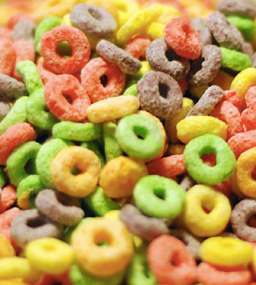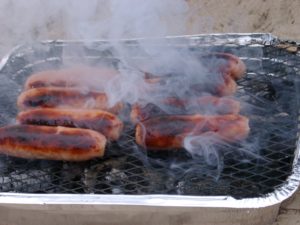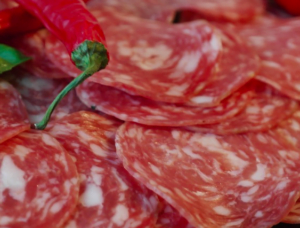 Carcinogens
Carcinogens
Carcinogens are chemicals or other hazards that can cause, promote or increase the risk of cancer. They have traditionally been regarded as substances that either damage DNA directly or, through the formation of oxidising free radicals, cause genetic rearrangements and mutations. In this case, the genes that cause cancer (Oncogenes), become separated from the genes that stop them activating (suppressor genes) and are placed next to genes that stimulate them (promoter genes). The activation and promotion of these genes then trigger harmful biochemical pathways, leading to cancer. Carcinogens also have several other direct and indirect modes of actions which increase the risk of cancer development and promotion. Carcinogens can:
- Damage genes
- Via free radicals that directly damage DNA
- Inhibit DNA repair
- Alter expression of genes (epigenetics)
- Reduce immunity
- Promote chronic inflammation
- Stimulate hormone-sensitive cells
The World Health Organization and the International Agency for Research on Cancer (IARC) suggest that between 7% and 19% of cancers are attributable to carcinogen exposure. In reality, this figure is likely to be higher, given that we are exposed to a substantial number of chemicals on a daily basis. While many of these are completely safe, there remains a great deal of uncertainty over certain chemicals. The IARC categorises chemicals into the following five groups:
- Group 1: Carcinogenic to humans
- Group 2a: Probably carcinogenic to humans
- Group 2b: Possibly carcinogenic to humans
- Group 3: Unclassifiable as to carcinogenicity risk
- Group 4: Probably not carcinogenic to humans
Why do carcinogens matter after a cancer diagnosis?
Although patients with established cancer have already sustained the initial DNA damage required for benign cells to mutate and become malignant, the progress of cancer’s development and its spread around the body can be accelerated by continued consumption of carcinogenic foods. DNA damage encourages cancer to mutate into a more aggressive type or, in some cases, develop mechanisms which allow it to hide from the body’s immune system and even become resistant to medical treatments. Carcinogens can also have a direct effect on the biological processes that cause cancers to become more harmful, namely by:
- Making cancerous cells grow faster (proliferate)
- Preventing cancerous cells from dying when they have reached the end of their life cycle (apoptosis)
- Stimulating blood vessels to feed the rapidly growing cells (angiogenesis)
- Helping cancerous cells lose their stickiness to the site of origin (loss of adhesion)
- Encouraging cancerous cells to grow into adjacent organs (invasion)
- Spreading cancerous cells throughout the body (metastasise)
Avoiding carcinogens after cancer is advisable given the risk of developing new cancers is predictability high among people who have already displayed a pre-existing genetic vulnerability to cancer, and who may have also acquired genetic damage from chemotherapy or radiotherapy.
How much carcinogen exposure is harmful?
It’s impossible to live a life free of carcinogens and also unnecessary given that the body’s natural antioxidant defences can cope with a certain amount of exposure. It’s only when excess levels are consumed over long periods of time that these defences can be overloaded. The harmful effects of carcinogens depend on the amount an individual is exposed to over time, and whether they are consumed with other carcinogens (total carcinogenic load) or combined with natural anti-cancer phytochemicals. A good example is coffee, which contains moderate levels of acrylamide (a probable carcinogen) but is also loaded with healthy polyphenols – the net result is that studies show that regular coffee intake is associated with a lower risk of cancer.
As well as avoiding carcinogens, it is important to concentrate on lifestyle strategies which prevent cancer either on their own or by acting as antidotes to carcinogens. These are addressed in their own sections and include; regular exercise, having a healthy profile of gut bacteria, adopting an anti-inflammatory lifestyle, ensuring good levels of vitamins and minerals, and ensuring a high intake of polyphenol-rich foods.
Categorisation of carcinogens
- Dietary carcinogens
- Pesticides and herbicides
- Infective agents
- Naturally occurring exposures (ultraviolet light, cosmic radiation and radon gas)
- Medical treatments (radiation, chemotherapy, hormone drugs, immune suppressants)
- Electromagnetic waves
- Industrial and environmental exposures
Dietary carcinogens
The most common dietary carcinogens are:
- Acrylamides
- Heterocyclic amines (HCAs)
- Polycyclic aromatic hydrocarbons (PAHs)
- N-nitroso compounds (Nitrosamines)
- Meat
- Pesticides and herbicides
Acrylamides
These are not deliberately added to foods but are a natural by-product of the cooking process. They are formed by an interaction between amino acids (mainly asparagine) and sugars in a process called the Maillard Reaction. Acrylamides are typically formed when foods with sugar or starch are cooked at high temperatures (over 120°C) either by frying, grilling, roasting or baking for three minutes or longer.
Following ingestion, acrylamides are absorbed from the gut and metabolised into glycidamide. Laboratory animals given acrylamides or glycidamides develop more gene mutations and cancers, and exposure in animals also leads to harmful effects on the nervous system, including muscle weakness, paralysis and adverse effects on male reproduction. Despite the adverse effects on animals, epidemiological studies in humans linking their intake with cancer are inconclusive, explaining why they are classed as probable carcinogens.
Sources of dietary acrylamides
| Potentially > 4000 ppb Malt extract drinks Sweet potato crisp (chips) Veggie chips potato snacks Burnt toast |
Often 2000-4000 ppb Sweet chilli standard potato crisps Roasted oat bran crackers Kettle crisps (with added sugar) Baked breakfast cereals Bisceti snack |
Often 500-2000 pbb Hash browns Regular crisps Bruschetta vegetable crackers Grahams crackers or Ginger snaps Flavoured tortilla corn chips Rye crisp-bread sesame |
| Usually < 500 pbb Plain tortilla cord chips Butter flavoured popcorn Roasted nuts Prune juice Dark roast coffee Pretzels |
Usually <50 pbb Light roast coffee Bread – not toasted Pita bread |
Usually none Whole fruit Raw vegetables Boiled noodles Boiled pasta Unroasted nuts |
Advice on reducing levels of dietary acrylamides
You can accomplish a low dietary input by limiting French fries, chips, baked cereal or potato products, cookies, pastries, biscuits and pies, which tend to have the most acrylamides. Likewise, avoid products with added sugar or sweetened flavours before cooking. Storing raw potatoes in the fridge may lead to the formation of more free sugars in the potatoes (a process sometimes referred to as ‘cold sweetening’) and can increase overall acrylamide levels, especially if the potatoes are then fried, roasted or baked. If you want to fry or roast potatoes, do so only until they are golden yellow, not browned or blackened. The same goes for toasting your bread – don’t char or burn it. And if you’re a coffee drinker, you might want to opt for lightly roasted coffee beans in place of darker ones. In summary:
- Limit intake of kettle chips, cereal bars, baked potato snack products and French fries.
- Limit intake of cookies, pastries, biscuits and dry crackers
- Avoid foods with added sugar that are then baked at high temperatures or fried
- Eat fresh rather than roasted nuts
- Try eating as many raw (healthy) fruit and vegetables food as feasible
- Eat polyphenol-rich foods – the natural antidotes to carcinogens
- Eat whole prunes rather than prune juice
- Don’t store potatoes in the fridge
- Try not to over-bake food – go for a golden yellow colour or lighter rather than brown
- When frying or grilling, avoid charring the food
- Refrain from eating burnt toast
Polycyclic aromatic hydrocarbons (PAH) and hetero-cyclic amines (HCA)
Heterocyclic amines (HCAs) and polycyclic aromatic hydrocarbons (PAHs) form when meat is cooked at temperatures above 300ºF. HCAs are formed when amino acids, sugars, and creatinine (found in muscle) react at high temperatures, while PAHs are formed when fat and juices from meat drip onto the fire, causing flames which promote their adherence to the surface of the meat. PAHs and HCAs are also formed during the smoking of meats and are found in car exhaust fumes, other smoke pollution and tobacco smoke.
What’s the evidence that HCAs and PAHs increase cancer risk?
HCAs and PAHs are carcinogenic because they are capable of damaging DNA, causing mutations. In lab experiments, animals fed with high HCA and PAH foods had increased risks of breast, colon, liver, skin, lung and prostate cancer. In humans, studies have clearly linked eating fried, well done or charred meats with an increased risk of a number of cancers, particularly colorectal, pancreatic and prostate. In the body, HCAs and PAHs are metabolised by specific enzymes into DNA damaging chemicals, in a process called bioactivation. It is known that the activity of these enzymes can differ from one person to another, so some people are lucky enough to be inherently more resistant to these carcinogens, and some are more sensitive.
Advice on reducing HCA and PAH formation in cooked meats
- Avoid direct exposure of meat to an open flame or a hot metal surface
- Avoiding prolonged cooking times (especially at high temperatures).
- Use an oven to partially cook meat prior to grilling or barbecuing.
- Continuously turn or flip meat over on a high heat source.
- Clean to frying pan, griddle, hot plate or barbeque from the blackened remains
- Remove charred portions of meat
- Refraining from using gravy made from meat dripping
N- Nitroso compounds
Nitrates and nitrites are composed of a single nitrogen atom (N) and a number of oxygen atoms (O); the chemical symbols are NO3 and NO2 respectively. They are both found naturally in many healthy foods and are added to processed meats as preservatives. It is believed that nitrates themselves are relatively inert until they are reduced to nitrites. There is a lot of confusion about the risks of nitrates or nitrites. Nitrates in plants are actually very beneficial, as they are converted to nitric oxide (NO) which has numerous health benefits.
Nitrites can only be poisonous if consumed in huge quantities. Depending on what they are eaten with, nitrites consumed in food are either converted into healthy NO or into volatile carcinogenic nitrosamines. Laboratory experiments have shown that nitrosamines can damage DNA by causing gene mutations, which is why, in animal experiments, a variety of cancers of the liver, lung, and stomach have been induced after its regular consumption. In humans, studies have linked the regular consumption of nitrosamines with an increased risk of both childhood and adult brain and colorectal tumours.
Sources of nitrates or nitrites
In a typical person’s diet, 80% of nitrates come from vegetables such as beetroot, spinach, radishes and lettuce. The rest comes from the preservative sodium nitrite, which helps fights harmful bacteria in bacon, ham, salami and other processed and cured meats. Other sources include some cheeses, non-fat dry milk, cured dried fish, cigarette smoke, beer and certain cosmetics.
What factors influence the conversion of nitrites into carcinogens?
In some heavily processed meat, the nitrites have already been converted into N-Nitrosodimethylamine (NDMA) – a volatile nitrosamine and known carcinogen – as a result of direct-fire drying. Likewise, dried, smoked and salted fish have been found to contain high concentrations of nitrosamines and, unsurprisingly, their regular intake has been associated with higher rates of colon and rectal cancers. On the other hand, even though vegetables contain nitrates/nitrites, they are rarely exposed to such high heat and are low in amino acids, so don’t contain NDMA. Bacteria in the stomach and gut, the heme ion in red meat, and an individual’s vitamin C and polyphenol intake can all affect whether either carcinogenic nitrosamines or healthy nitric oxides are formed.
Benefits of plant nitrates
Plant nitrates provide a natural means of increasing blood nitric oxide (NO). Many vegetables contain nitrates, but the most notable include:
- Arugula lettuce
- Spinach and kale
- Rocket salad and watercress
- Beetroot
- Celery and radish
Production of NO starts with the microflora in the upper gut, which convert nitrates to nitrites which are then metabolised to NO and other nitrogen oxides by a variety of reductase enzymes. This process is enhanced by vitamin C which also prevents its conversion to nitrosamines. NO is absorbed by endothelial cells lining the arteries, then penetrates the underlying smooth muscles and acts as a potent vasodilator that relaxes the arteries, controlling blood pressure and improving overall circulation.
Advice
- Avoid hot dogs, sausage, ham, bacon, pastrami, salami and tinned luncheon meats
- Serrano ham has low nitrites; biltong, Parma ham & prosciutto don’t have added nitrites.
- Avoid foods already containing nitrosamines (e.g. dried salted fish)
- Reduce heat when grilling or frying
- If you are a meat-eater, reduce intake of heme ion rich red meats (e.g. beef, lamb or liver)
- Eat vitamin C and polyphenol-rich veg with every meal, especially if it includes meat
- Look after your healthy gut bacteria – see tips for a healthy gut
Non-dietary Carcinogens
Infectious agents
- HPV – Cervix & Head and neck cancers
- HIV – AIDS – Lymphoma and other cancers
- KSHV – Karposi sarcoma
- Hep B & C – Liver cancer
- Ebstein-Barr – Aggressive lymphoma
- MCPyV – Merkel cell skin cancer
- Liver fluke – liver cancer
- Schistosomiasis – bladder cancer
Advice: Avoid situations or practices that increase the likelihood of catching these infections and get vaccinated where possible, particularly for hepatitis B.
Radioactivity
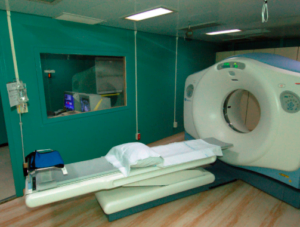
Today, medical X-rays, CT scans, isotope bone scans and PET scans are the most significant sources of radioactivity, and although the risks are still small, it should be remembered that there should be a good reason to have an X-ray.
Medical treatments

The combined pill slightly increases a woman’s risk of breast cancer. In the UK, about 1% of breast cancers in women are due to oral contraceptives, although it’s worth noting that the combined pill reduces a woman’s risk of ovarian and womb cancers. Hormone replacement therapy (HRT) increases breast cancer risk even when used for only a short time. Combination HRT (oestrogen and progesterone) increases breast cancer risk, while Estrogen-only HRT also increases the risk of breast and ovarian cancer, but only when used for more than 10 years.
Circadian rhythm

The circadian rhythm impacts every system in your body, from your immune system, to how well you digest your food, to how much insulin is released in response to sugar intake. It is not a surprise then that when your circadian rhythms are properly regulated, you sleep well, you have energy in the mornings, you are in a better mood, have a lower risk of depression and a reduced risk of chronic diseases, including cancer.
Gum disease
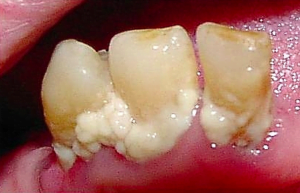
The precise mechanism that enables gum disease to cause cancer is not completely understood, but there are a number of hypotheses. Firstly, people with gum disease are more likely to have other bad habits such as higher sugar intake, obesity and smoking. Secondly, periodontal pockets may act as reservoirs for cancer-promoting bacteria and viruses. Furthermore, periodontitis creates a state of chronic inflammation which results in constant release of c-reactive protein, inflammatory cytokines, chemokines, growth factors, activation of COX2 and prostaglandins, all of which are associated with cancer development and progression.
Advice on avoiding gum disease: Visiting the dentist regularly is wise, but the day-to day-measures aimed at preventing the formation of dental plaque and painful caries are most important.
Plastics and other xenoestrogenic chemicals
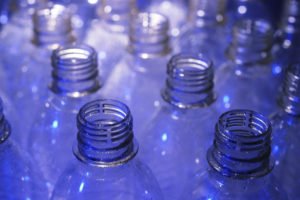
Researchers from academic centres have demonstrated that if the same oestrogenic pollutants in our environment are given to laboratory mice, they induce and promote mammary cancers. In humans, a report published in the International Journal of Andrology has linked pollutant oestrogenic chemicals in mothers’ breast milk with an increased rate of testicular cancer in their male children. Plastic pollution can also have other potentially harmful non-hormonal influences on cancer processes. For example, bisphenol A (BPA) can cause epigenetic disruption of DNA (via methylation, histone acetylation and disturbance of miRNA binding) leading to overexpression of genes which promote cancer.
Advice on reducing exposure to plastic and xenoestrogenic pollutants
- Try to choose non-plastic packaging
- Choosing whole, fresh foods where possible will also reduce your exposure to synthetic additives and preservatives found in processed foods
- Store food in china or glass containers
- Keep plastic water bottles away from heat or the sun’s ultraviolet rays, as this causes leaching of the chemicals into the foods
- Look for products packaged in plant-based plastics like PLA
- Air pollution is all around us, but try to avoid exercising besides a busy road

 Carcinogens
Carcinogens